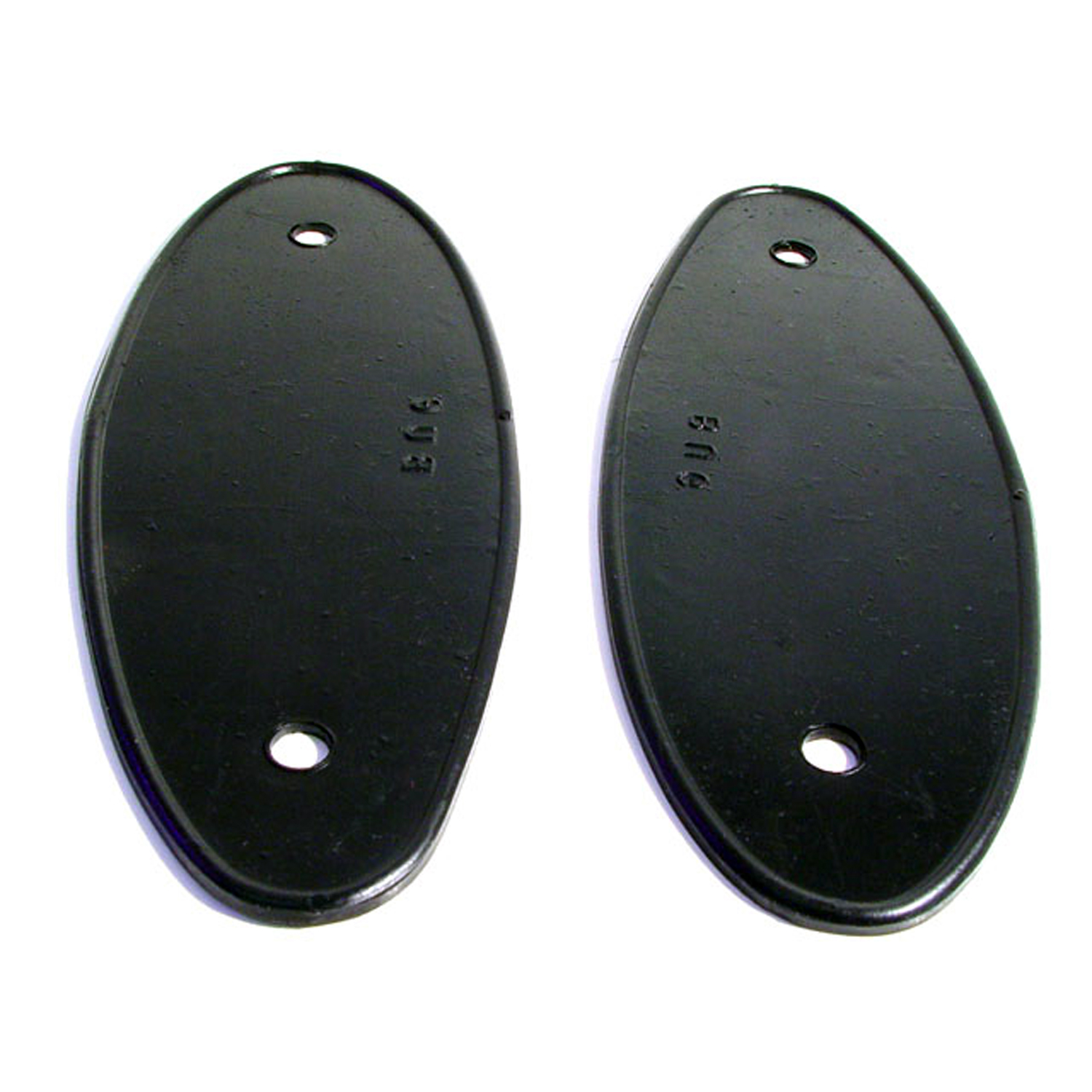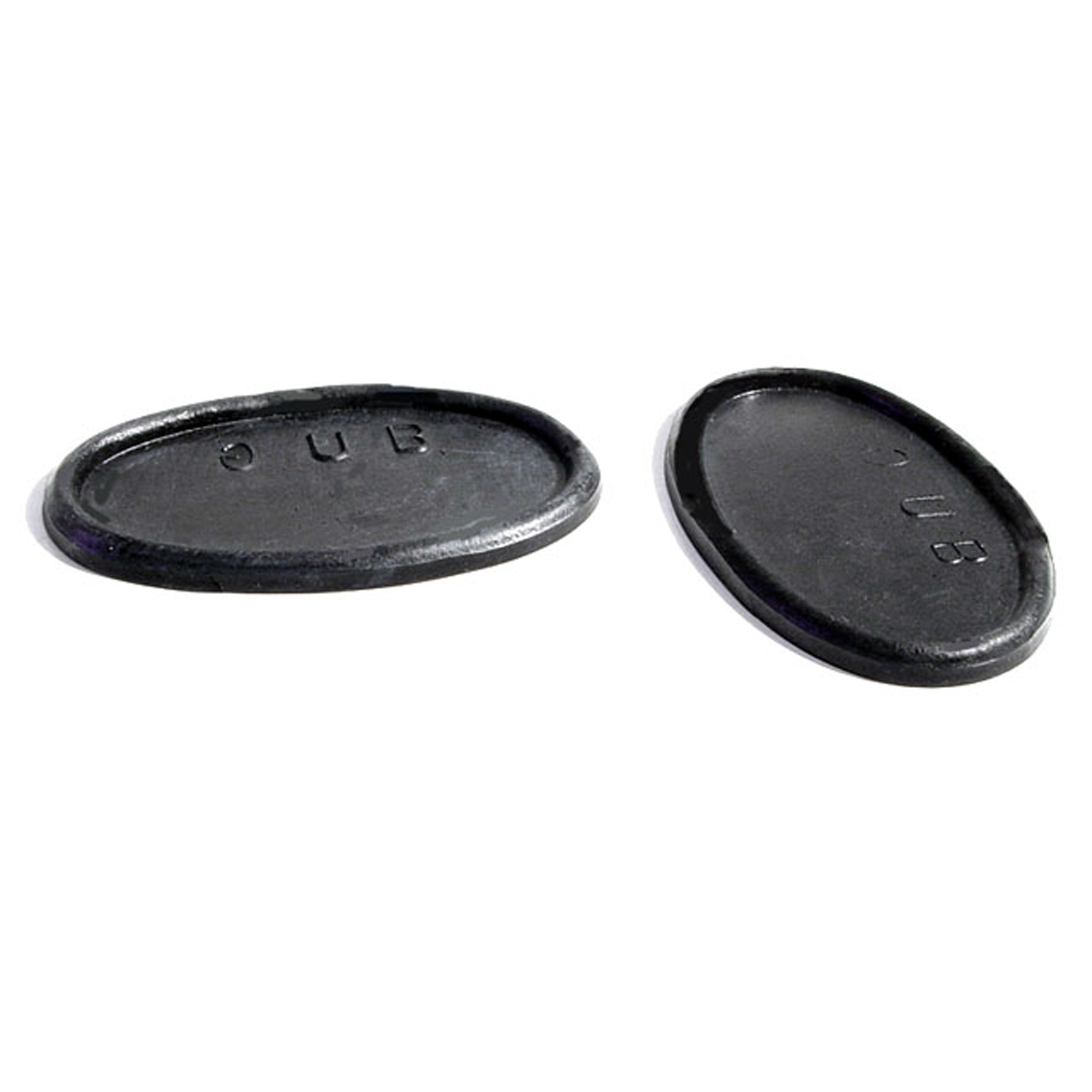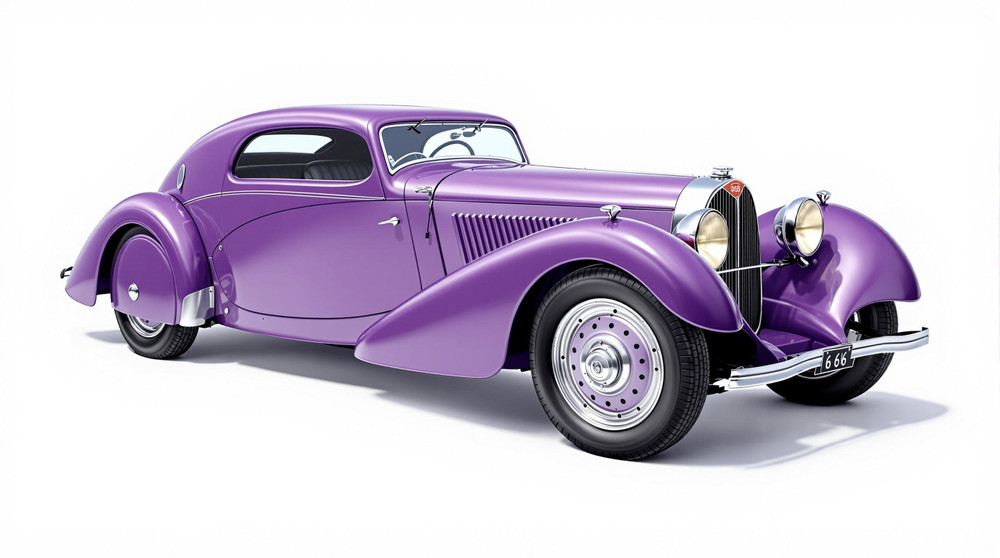Image of 1930 Bugatti Type 46/46s, Note: These illustrations use artistic license and may differ from actual historical models.
Performance Metrics
Fundamental Metrics
Emotional Appeal
MMP Rating
| Engine Specifications | |
|---|---|
| Engine Options: | Single engine option |
| Displacement Range: | 5.4 L |
| Horsepower Range: | Estimated 140 HP |
| Torque: | Not available |
| Compression Ratio: | Not available |
| Ignition System: | Battery and coil ignition system |
| Cooling System: | Water-cooled |
| Performance Specifications | |
| 0-60 Time: | Not available |
| 1/4 Mile Time: | Not available |
| Top Speed: | 93 mph |
| Transmission and Drive | |
| Drive Type: | Rear-wheel drive |
| Transmission Type: | 3-speed manual |
| Fuel and Efficiency | |
| Fuel System Type: | Carburetor |
| MPG: | Not available |
| Dimensions and Brakes | |
| Brakes: | 4-wheel drum brakes |
| Wheelbase: | 138 inches |
| Weight: | Estimated 2,425 lbs |
Note: Specifications for classic cars are given to the best of our ability, considering the limited and variant data available.
A Glimpse into the Grandeur of the 1930 Bugatti Type 46/46s
The 1930 Bugatti Type 46, often referred to as the "Petit Royale," is a testament to the grandeur and craftsmanship synonymous with the name Bugatti. Born from the genius of Ettore Bugatti and his son Jean, this vehicle emerged during an era where automobiles began to transcend mere transportation, becoming works of art on wheels. The Type 46 boasted an elegance that captured the spirit of its time while setting a benchmark for luxury cars. A notable moment in its history includes its debut at the 1929 Paris Motor Show, where it wowed the elite with its blend of performance and opulence.
Design and Innovation
The exterior of the Type 46 is a harmonious blend of flowing lines and balanced proportions, a hallmark of Bugatti's design ethos. Its large radiator grille, commanding hood, and sweeping fenders create a silhouette that is both imposing and graceful. Inside, passengers are enveloped in an interior that showcases exceptional materials such as fine leathers, rich woods, and plush carpets. Technologically, it featured advanced engineering like a three-speed gearbox and cable-operated brakes that were innovative for its time. While color options were tailored to the buyer's preference, popular choices often included two-tone schemes that accentuated the car's elegant curves. The Type 46 came in various body styles, with the most iconic being the luxurious coachbuilt coupes by renowned coachbuilders like Figoni et Falaschi.
Historical Significance
The Bugatti Type 46's impact on automotive design was profound. It introduced a level of luxury and refinement that set it apart from contemporaries, influencing future generations of luxury vehicles. Its combination of aesthetic beauty and mechanical prowess created a legacy that still resonates in the automotive world today.
Performance and Handling
Underneath its sculpted bonnet lay an impressive 5.4-liter straight-eight engine capable of propelling the Type 46 to top speeds nearing 100 mph—a remarkable feat for its era. The car's acceleration was brisk for its size, with a sense of smoothness that complemented its luxurious demeanor. On the road, it handled with poise, absorbing imperfections while offering a driving experience that was both engaging and refined. The engine's purr was a symphony to enthusiasts' ears, encapsulating the thrill of driving such an esteemed machine.
Ownership Experience
Owners of the Type 46/46s typically used their vehicles as grand tourers or showpieces at prestigious events. Maintenance required a dedicated approach due to its bespoke nature and advanced mechanics for the time. However, those who understood its intricacies found it relatively manageable to maintain.
Fun Facts
The Type 46 has graced many collections worldwide, including those of royalty and celebrities. Although not known for breaking speed records, it stood out for its unparalleled elegance and craftsmanship. Criticisms were few but sometimes pointed toward its hefty price tag when new.
Collector's Information
Today, a well-preserved Bugatti Type 46/46s can fetch significant sums at auction, with values ranging widely based on provenance and condition. It is estimated that around 450 units were produced during its production run from 1929 to 1936. As for appreciation, these vehicles have consistently gained value over time due to their rarity and historical importance.
Conclusion
The legacy of the 1930 Bugatti Type 46/46s is one steeped in luxury, innovation, and artistic expression. It stands as a monument to an era when cars were more than just machines—they were moving masterpieces crafted for the discerning few. Its significance in automotive history is undeniable, ensuring its place among the pantheon of classic automobiles.
1930 Bugatti Type 46/46s Catalog of Parts
 1930 Bugatti TYPE 46/46S Headlight Pads. 3" wide X 8-1/8" long. Pair-MP 337-AHeadlight Pads. 3" wide X 8-1/8" long. Pair
1930 Bugatti TYPE 46/46S Headlight Pads. 3" wide X 8-1/8" long. Pair-MP 337-AHeadlight Pads. 3" wide X 8-1/8" long. Pair 1930 Bugatti TYPE 46/46S Door Handle Pads. 1-3/8" wide X 2-1/4" long. Pair-MP 337-BDoor Handle Pads. 1-3/8" wide X 2-1/4" long. Pair
1930 Bugatti TYPE 46/46S Door Handle Pads. 1-3/8" wide X 2-1/4" long. Pair-MP 337-BDoor Handle Pads. 1-3/8" wide X 2-1/4" long. PairWhy Choose Metro?
For over 100 years, Metro Moulded Parts has been the pinnacle of quality in classic car restoration parts. Our commitment to precision and authenticity in every component ensures a perfect fit and an OEM-level appearance.
- Expert Craftsmanship & Quality: Each part is a testament to our dedication to reliability and perfection, crafted from original designs and thoroughly tested.
- Advanced Technology: We use cutting-edge techniques to create flawless, long-lasting parts that surpass others in performance.
- SuperSoft Sponge – The Ultimate Door Seal: Not only are our door seals 30% softer than competitors', but they're also guaranteed to never leak. They effectively reduce wind and road noise, enhancing your classic car's comfort and driving experience.
- Proudly American: Our parts are a product of American craftsmanship, made in the USA with a spirit of excellence and heritage.
- Unrivaled Warranty: We back our products with a 30-year industry-leading warranty, a testament to our confidence in their quality.
Join us in preserving the legacy of classic cars with parts that are crafted for perfection, not just made.

